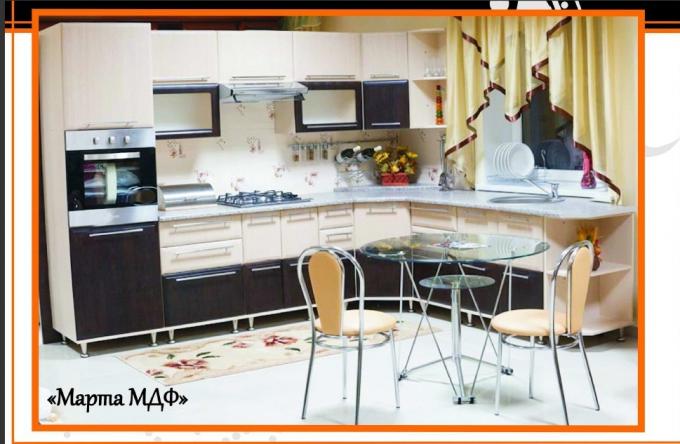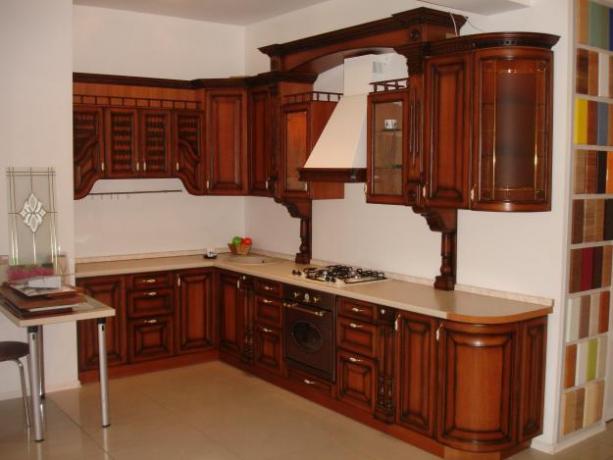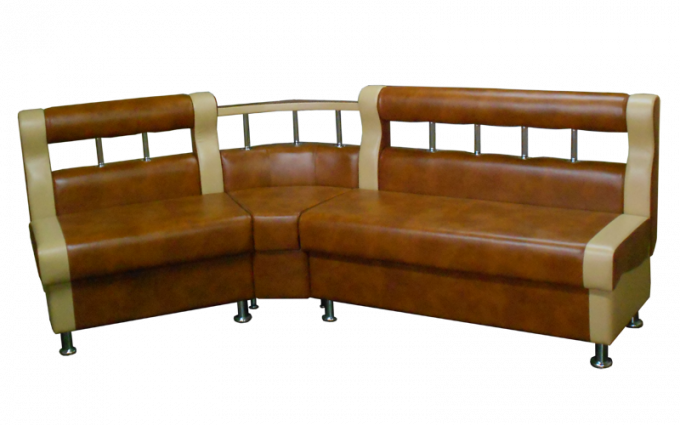Content
- 1 Self-made kitchen furniture
-
2 Materials
- 2.1 MDF
- 2.2 Laminated chipboard
- 2.3 MDF postforming
- 3 Tool
- 4 Conclusion
Thanks to technological progress, high-quality furniture can be produced not only from valuable wood species, but also from inexpensive, durable and environmentally friendly materials. An example of such a raw material is MDF. The production of kitchen facades from MDF has become one of the priority directions in the furniture industry due to the unique qualities of this material and its relative cheapness.
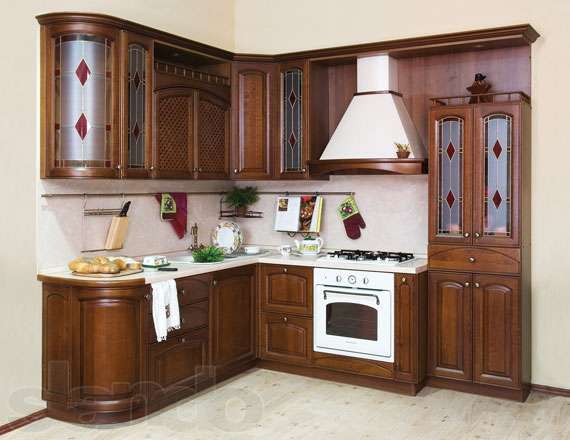
Kitchen set made of MDF.
Self-made kitchen furniture
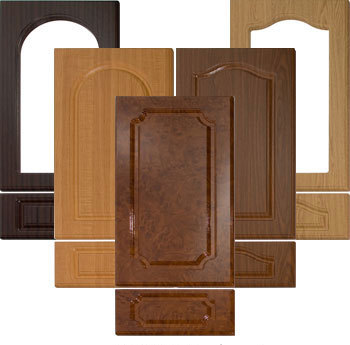
Examples of details for facades.
Kitchen furniture can be made by yourself.
This may seem presumptuous, but here are a number of points to prove:
- Making kitchen facades with your own hands does not require serious skills or equipment, since consumables and parts, as well as fittings, are standardized and available for sale.
- Any technical information is available on the Internet, with the help of which you can do without the help of a designer or designer by assembling a typical project.
- The main difference between furniture is its facade; the design of frames and shelves is not of fundamental importance. This means that by replacing the facade and fittings, you also change the furniture itself.
- Modern power tools allow even a beginner to perform complex operations for cutting and processing wood and MDF. Moreover, any tool can be rented for the period of time you need in any major construction supermarket.
- There are a lot of training videos on the Internet that will help you visualize and understand all the intricacies that the manufacture of furniture kitchen facades has (see. which facades for the kitchen are better).
- The most critical and difficult parts can be used in the factory version, and the frame of the box, shelves and the assembly process can be done independently. As a result, the savings will be significant.
- You can use parts or whole blocks of old furniture by updating only the facade and painting.
- Finally, you can order the cutting of all the parts in the workshop, you just have to assemble the furniture using a screwdriver and self-tapping screws. Even this option is much cheaper than buying ready-made furniture.

Facade and fittings.
Materials
MDF
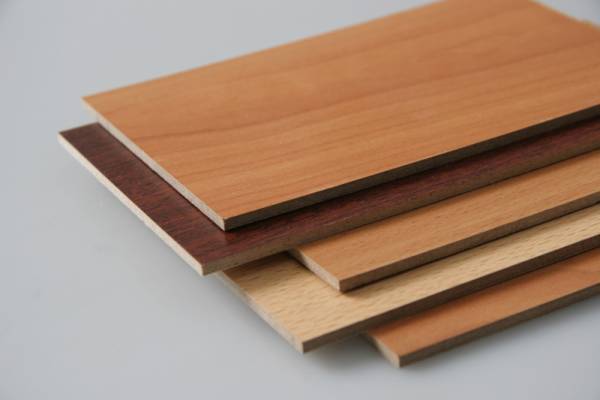
MDF boards.
MDF is one of the most preferred materials for making kitchen furniture. types of facades for the kitchen). It is a medium-density fiberboard made from softwood fibers by pressing under high pressure and temperature. No harmful or toxic chemicals are used in this process, so the material is as pure as ordinary wood..
In addition, MDF is devoid of any internal flaws typical for wood (knots, cracks, pores, traces of parasites, etc.). This material perfectly withstands high temperatures and high humidity, which are present in any kitchen.
I must also say that MDF lends itself easily to various types of processing: cutting, milling, drilling. The plate holds fastenings well with screws and nails, in addition, it can withstand significant mechanical loads.
Laminated chipboard

Veneered chipboard.
The official name of this material is LDSP. It is a high quality chipboard coated with a layer of resistant melamine film at high pressure and temperature. Some varieties are additionally coated with a special varnish that is resistant to moisture and mechanical damage. The material does not require additional finishing and can be used for furniture production.
Also, under the melamine layer, valuable wood veneers or a layer of printed furniture foil are often added. In the photo above, you can see what it looks like, veneered chipboard.
It is widely used for the production of furniture, however, it has its drawbacks:
- not as durable as wood or MDF;
- afraid of high temperatures: at 70 ° C, the film may begin to peel off or swell;
- damaged coating is difficult to restore and repair;
- worse for milling and other types of processing;
- swells when moisture gets under the film.
Advice!
Do not assume that chipboard is a bad material. On practice kitchen facades made of laminated and plastic coated Particleboard has proven itself well.
Moreover, the price of this material is noticeably lower than MDF and wood.
MDF postforming

Plastic coated MDF boards.
This is an MDF board that has been post-laminated. The essence of the method is that a layer of plastic is glued to the surface of the part, and its free overhang is wrapped around the ends. Thus, a smooth transition from the front part to the end part is obtained, and the coating is completely sealed and moisture does not get on the plate.
The plastic is resistant to wear and tear and significant mechanical damage. It is by far the most practical and durable coating. Even countertops are made using the postforming method, on which products are constantly cut and processed, water and spices are poured, and washed with aggressive means.
Plus, postforming looks great in the kitchen, especially when combined with modern appliances and style:

Kitchen with a postforming facade.
You can also often find postforming in combination with particle board. This option is considered not so high quality, but in practice it has proven itself excellent.
Advice!
If the main thing for you is practicality, we recommend you opt for this material. Postforming lasts longer than laminate and wood and is easier to maintain.
Tool

Tool kit.
To work on the assembly and manufacture of kitchen furniture, you will need:
- Screwdriver.
- Electric jigsaw.
- Parquet power saw.
- Electric drill.
- Screwdriver.
- Ruler.
- Square.
- Level.
- Marker or chalk.
- Bit set for drills and screwdrivers.
- Drills for wood and concrete.
- Sandpaper.
- File.
- Wood glue.
- Dowel.
- Accessories (hinges, handles, locks, sides, etc.).
- Dimensional drawing.
- Instructions or work plan.
- Chisel.
- Plane.
- Pliers.
- A hammer.
- Mallet.
- Bit.
- Vice.
- Clamps.
- Construction knife.
Advice!
An expensive tool does not have to be purchased. If you do not plan to use it all the time, rent the necessary kit.
Conclusion
Of course, you cannot immediately make furniture of the level of large manufacturers on your own. However, everyone can replace the facade, update the fittings or assemble the finished parts. Moreover, a modern tool does not require skill, and the Internet allows you to get any information you need.
